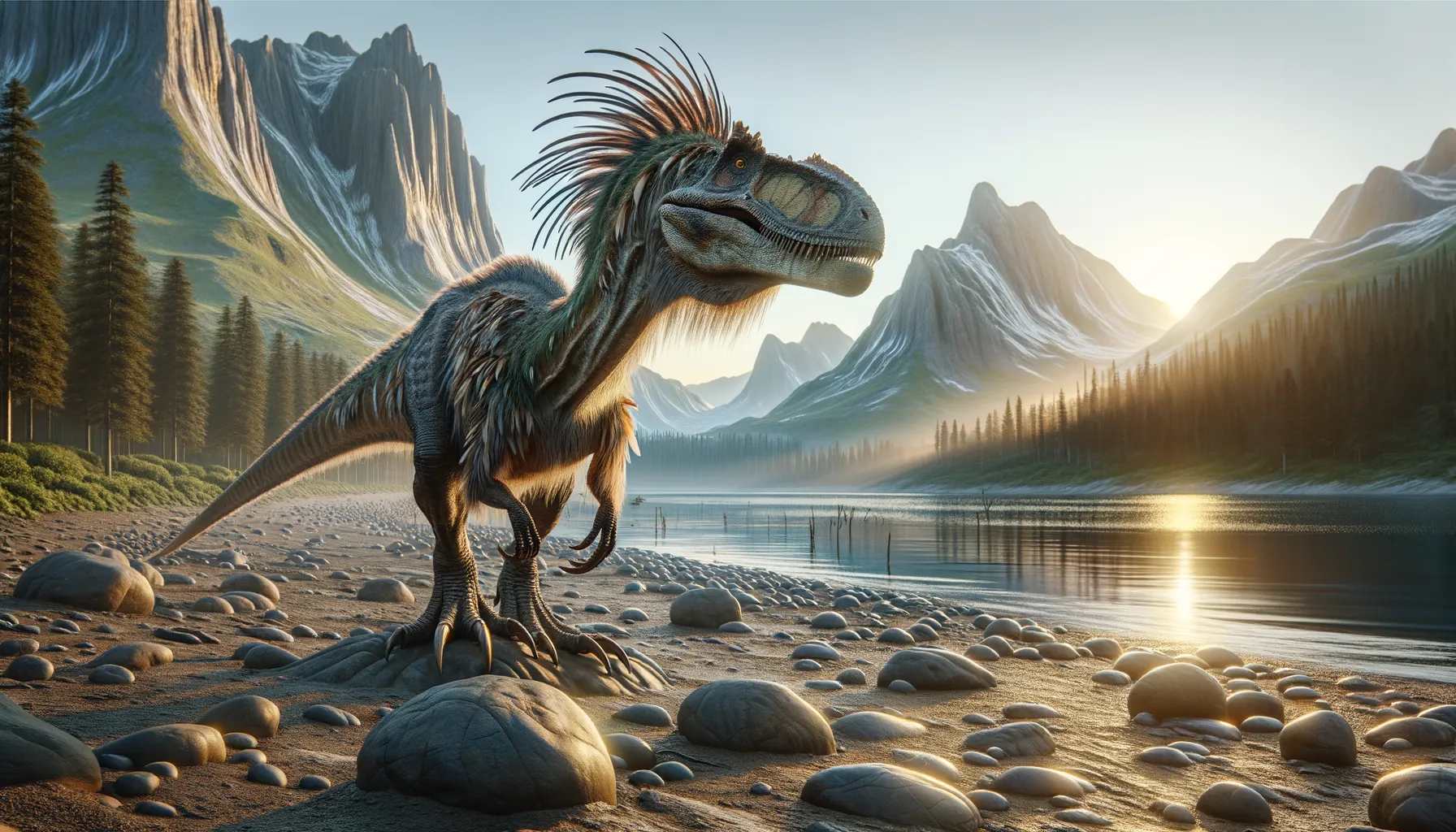
Jianchangosaurus
A small dinosaur with a big story.
Period
Cretaceous
Length
Reaches up to 1.6 meters in length.
Height
About 1 meter tall at the hips.
Weight
Approximately 20 kilograms.
Jianchangosaurus is a fascinating feathered theropod dinosaur that roamed the Earth during the Early Cretaceous period. Belonging to the therizinosauroid clade, it showcases unique physical features such as elongated claws and a beak-like mouth. Its discovery in Liaoning, China, adds valuable insight into the evolutionary transition of theropods to birds. This small, plant-eating dinosaur provides paleontologists with a clearer understanding of the diverse adaptions of theropods.
Diet
Jianchangosaurus had a herbivorous diet, primarily consuming plants. Its beak-like mouth was well-suited for cropping vegetation efficiently.
Hunting
Being herbivorous, Jianchangosaurus did not hunt in the traditional sense. Instead, it foraged for plants, exploiting available resources within its habitat.
Environmental challenges
Jianchangosaurus faced environmental challenges such as changes in vegetation due to climatic shifts. These changes could affect its food sources and require dietary adjustments. Additionally, living in a diverse ecosystem meant competing with other herbivores for resources. Predators also posed a constant threat, necessitating the development of defensive behaviors and adaptations.
Speed
Moderate, suited for short bursts of movement.
Lifespan
Estimated to be around 15 to 20 years.
First discovery
Discovered in 2009 in Liaoning, China.
Fun Facts
- Jianchangosaurus was a feathered dinosaur that lived during the Early Cretaceous period, about 120 million years ago.
- It was discovered in China in 2013, making it a relatively recent addition to the dinosaur family tree.
- Jianchangosaurus belonged to the theropod group, the same lineage that eventually led to modern birds.
- It had long, three-fingered hands, which were likely useful for grasping its prey or manipulating objects.
- Unlike many of its larger, more famous theropod cousins, Jianchangosaurus was relatively small, roughly the size of a large dog.
- This dinosaur had a beak and teeth, indicating an omnivorous diet, possibly munching on both plants and small animals.
- The discovery of Jianchangosaurus helps scientists understand the evolution of feathers and bird-like characteristics in dinosaurs.
Growth and Development
Jianchangosaurus likely experienced rapid growth during its juvenile stages to quickly reach a size that could help evade predators. It would have gone through several growth spurts, adjusting its diet to meet increased nutritional needs. As it matured, its unique anatomical features would have become more pronounced, aiding in survival and reproduction.
Habitat
Jianchangosaurus inhabited a region that was lush with ferns and other primitive plants. Its environment was characterized by a mix of forested areas and open spaces, providing ample opportunity for foraging. The climate would have been relatively warm and humid, contributing to the dense vegetation that supported its diet.
Interaction with other species
Jianchangosaurus interacted with a variety of other species within its ecosystem, including predators and fellow herbivores. These interactions may have included competition for food and territory. It might have formed small groups for foraging, enhancing its chances of survival against predators. The presence of other theropod species could have influenced its behavioral strategies, such as defensive maneuvers or social structures.
Natural lifespan
Its natural lifespan was likely around 15 to 20 years.
Reproduction
Jianchangosaurus likely reproduced by laying eggs, similar to modern birds and other theropods. Nesting behavior might have included selecting safe locations to protect eggs from predators and environmental hazards. Parental care could have played a role during the incubation period, ensuring a higher survival rate for their offspring.
Social behaviour
Jianchangosaurus may have exhibited some degree of sociality, possibly forming small groups or flocks. These social structures could have been advantageous for avoiding predators and finding food efficiently. Communication within groups might have involved visual or vocal signals for coordination and alertness.
Fossil locations
The fossils of Jianchangosaurus have been primarily found in the Yixian Formation of Liaoning, China. This region is known for its exceptionally well-preserved fossil beds from the Early Cretaceous period. The discovery of Jianchangosaurus in this area has provided significant insight into the diversity of therizinosauroids in Asia. Paleontologists continue to study these fossils to understand more about the ecology and evolution of these feathered dinosaurs.
